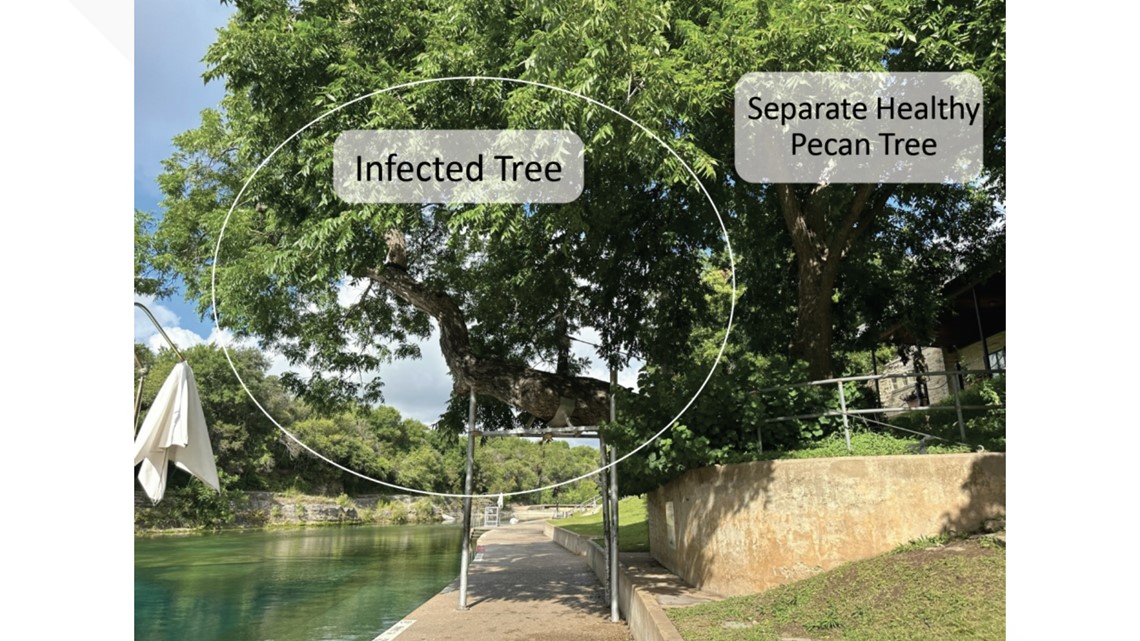Infection
‘Flo,’ a well-known tree at Barton Springs Pool, has been diagnosed with a fungal infection
The decades-old tree has been diagnosed with Kretzschmariadeusta, also known as brittle cinder fungus.
AUSTIN, Texas — A well-known pecan tree at Barton Springs Pool has been diagnosed with a wood decay fungus.
On July 6, staff with the Austin Parks and Recreation Department (PARD) were conducting a regular inspection of the tree, named “Flo,” when they noticed a fungal fruiting body at its base. A sample was sent to the plant diagnostic lab at Texas A&M University for analysis.
On Aug. 15, PARD received results confirming the diagnosis of Kretzschmaria deusta, also known as brittle cinder fungus. According to the department, this disease weakens roots and wood at the base of a tree and has been known to cause whole tree failures in trees that otherwise look healthy.
Following the diagnosis, PARD contacted three independent certified arborists to do a follow-up inspection and provide independent professional opinions to help guide decision-making. PARD said the initial independent report was expected on Aug. 18, and the other two are expected sometime this week.
The department said there are no effective treatments for brittle cinder fungus and because the disease feeds on live tissue, it can cause otherwise healthy-looking trees to collapse under their own weight. Tree removal is typically recommended once a tree is infected with the fungus.
As a precautionary safety measure while PARD awaits the additional reports from the arborists, access around Flo will be sectioned off from Barton Springs Pool users. An additional rope has also been installed to provide support to the tree.
PARD said if removal is necessary, it will work to ensure there are opportunities for Austinites to honor the tree and options to memorialize it through creative reuse of remaining intact wood.
“Over the last 100 years, this tree has been a part of Barton Springs pool and watched as generations have enjoyed this uniquely Austin space,” the department said.
PARD said it “recognizes the immense significance of this tree” and has taken measures to preserve it over the decades. Flo, which has been leaning over the pool deck since at last 1928, is currently supported by a combination of cables and permanent steel support structure. A large trunk cavity was partially filled with concrete 50 years ago to help the tree close the wound, “a practice no longer used in the tree care industry,” according to PARD.
Fencing was also installed around the critical root zone to reduce soil compaction from foot traffic, and another pecan tree was planted up the hill decades ago to replace any canopy lost if or when Flo stated to decline. PARD said staff has monitored the tree’s structural integrity since then due to its proximity to pool users.
KVUE on social media: Facebook | Twitter | Instagram | YouTube

